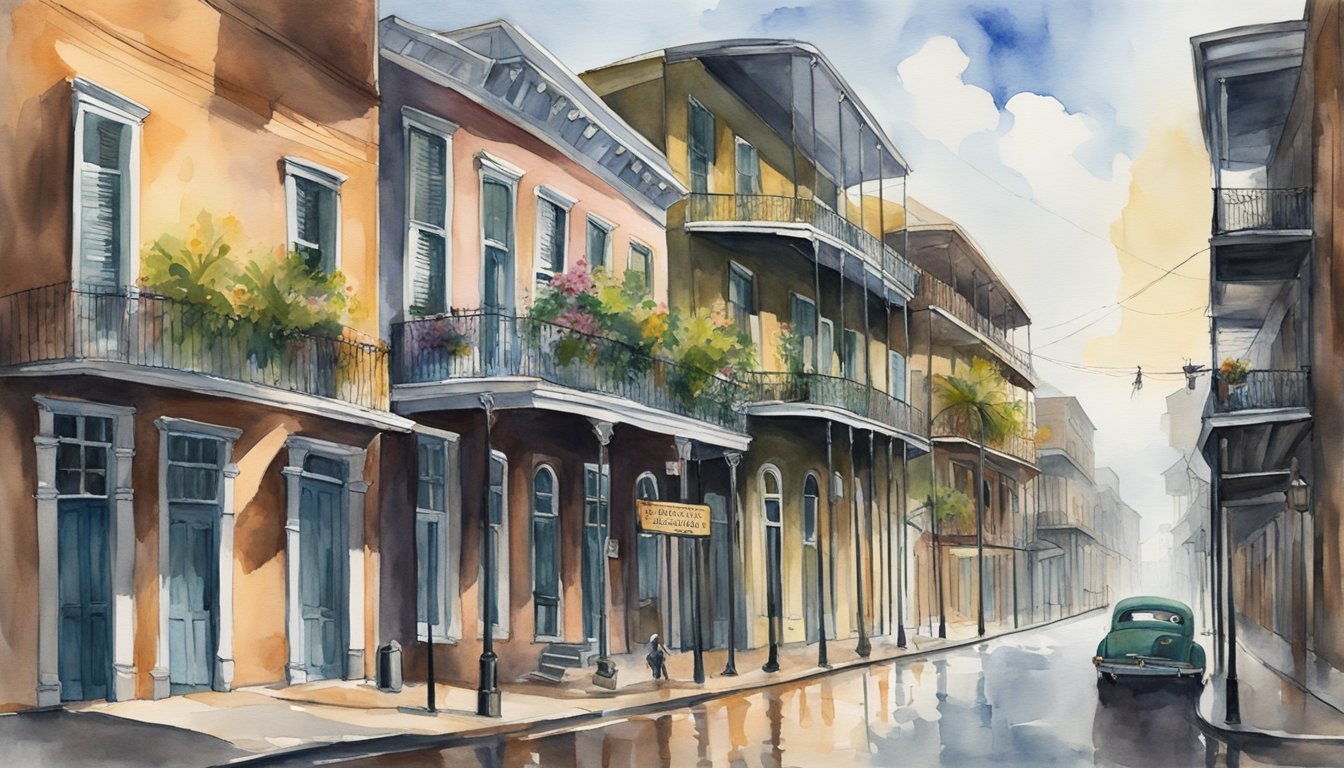Origins and Identity of the Axeman
In the shadowy corners of New Orleans history, an enigmatic figure known as the Axeman terrorized the city with a string of gruesome murders during the early 20th century. His true identity remains a mystery, and his legend is steeped in intrigue and fear.
Historical Context of New Orleans
During the early 1900s, New Orleans was a melting pot of cultures, with a significant population of Italian immigrants, many of whom worked as grocers. The French Quarter buzzed with the energy of newcomers and the proximity to the Mississippi River made it a hub for trade. However, beneath this bustling surface, there was also tension and prejudice towards the growing immigrant population, especially Italians, whom some residents viewed with suspicion.
The Axeman’s First Victims
On May 23, 1918, a gruesome discovery was made: the bodies of Joseph and Catherine Maggio, Italian grocers, were found brutally murdered in their own home. This marked the first known attack of the Axeman. Over the following year, several other attacks were attributed to this murderer, each targeting Italian-Americans, stirring up rumors that these crimes could be the work of the Mafia or an anti-Italian sentiment.
Profile of the Axeman
The Axeman was an unidentified serial killer who managed to evade the police. The killer’s penchant for leaving the murder weapon typically an axe, at the crime scene became a gruesome signature. Despite a letter allegedly from the Axeman claiming he was a non-human spirit, authorities believed the killer was a mortal being with a deep hatred for Italians or perhaps a vendetta against grocers. One suspect, Joseph Momfre, was linked to the case when a dying victim whispered a name that sounded similar, but this lead never resulted in a conclusive connection. The Axeman’s identity remained unknown, and to this day, the mention of the name evokes the unresolved terror that once gripped New Orleans.
Cultural Impact and Unsolved Mystery

The Axeman of New Orleans left an indelible mark on the city’s lore, intertwining fear, jazz music, and mystery in a tale that persists today. The cultural impact of the case has been profound, with its unresolved nature continuing to fascinate and terrify in equal measure.
Fear and Influence on Popular Culture
At the peak of the Axeman’s spree, New Orleans was enveloped in fear with a series of bloody axe murders. In response, jazz music became an unexpected symbol of safety when a chilling letter sent to the Times-Picayune newspaper stated that the murderer would spare those where jazz was played. This gave rise to a peculiar defense mechanism within the community – music as a ward against the unknown murderer. The Axeman’s presence infiltrated popular culture, inspiring everything from songs and books to an infamous episode of the TV series “American Horror Story.”
Unresolved Nature of the Case
Despite extensive investigations, the crimes attributed to the Axeman were never solved. Speculation pointed towards various suspects including a man named Joseph Mumfre, implied in some reports to be connected to the murders, and the possibility of a vendetta against Italian-Americans, a predominant theory at the time of Louisiana’s dark figure. Authorities like New Orleans Superintendent of Police Richard Warner and those at Charity Hospital where victims were treated worked to establish a pattern or modus operandi, but the shadowy perpetrator evaded capture.
The Axeman’s Legacy
Even now, over a century later, the Axeman has become an urban legend, a specter haunting the annals of true crime. Books such as Chuck Palahniuk’s “Haunted” and the stage with “Sister Vigilante” reflect this figure’s enduring narrative. A particularly striking piece of sheet music titled “The Axman’s Jazz (Don’t Scare Me Papa)” captures the bizarre intersection of terror and music unique to this saga. The proprietary blend of mystery, music, and the spooky allure of unsolved crimes ensures that the Axeman’s story continues to ripple through New Orleans’ identity.

